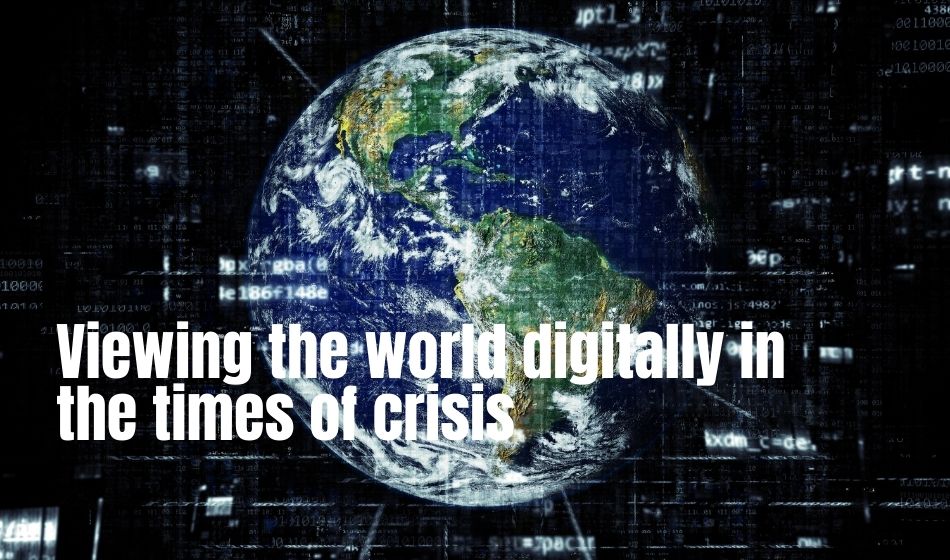In this ubiquitous arena of digitalization and automation and a highly equipped technological world, a further shooting rise and surge was seen with the advent of the Covid-19 pandemic. By the end of March 2020, nearly half of the world witnessed lockdowns and strict confinements at homes and by May 2020, around 200 countries around the globe had shut down their physical businesses, as part of complete lockdowns. The changes did not even take a few days to be implemented, rather overnight instructions to limit social gatherings, restrict in-person business operations and closure of all physical activities were put into practice in sheer urgency.
Work from Home- a fresh concept?
While it may have had a crashing and huge impact on physical and in-person business activities, the results did not wholly or completely end the continuous operations due to a good encouragement to adopt Work from Home (WFH) policy from many aware organizations. It may be fair to say that WFH got a boost with the coming of Covid-19 pandemic, the notion, however, was not a novel one. The pre-pandemic world was already progressing to unleash the power of digitalization and the use of technology by adopting many automations and digital strategy and techniques. Due to already being aware of such concepts, for example, video conferencing and calling for meetings not possible in a physical environment, some full-fledged professional organizations did not take more than a day to instruct employees to work from home immediately as to not disrupt the flow of their respective businesses.

We may safely say that use of technology was always a helpful means of engaging with customers, allowing some workplace flexibility, and for a way to introduce automation and faster processes for many businesses prior Covid-19 but the pandemic immensely forced the companies to create digital solutions for themselves so that the organizations remain operative remotely and continue to serve their clientele with the same efficiency or even in better ways.
According to a new McKinsey Global Survey of executives, their companies have accelerated the digitalization of their customer and supply-chain interactions and of their internal operations by “three to four years.” Moreover, the share of digital or digitally enabled products in their portfolios has accelerated by a shocking seven years. Nearly all respondents say that their companies have stood up at least temporary solutions to meet many of the new demands on them, and 20-25 percent more quickly than they had expected. The time duration as per employees’ expectation for the implementations at their organizations was a year but in actual it took an average of just 11 days.
Digital equality or further digital divide?
While many organizations stay up to the mark, a few others are stumbling and falling apart due to their less or diminished interest in adopting digitalization. Those companies or businesses who relied on digitalization and technology way before the pandemic, were prepared and are currently able to leapfrog their less nimble competitors efficiently. This is not to undermine the strong challenges being thrown by the virus every now and then but the digital maturity they have just gained will at least calm the horrendous storm and will enable them to come out even stronger than before despite suffering from a few losses. Those who remain dysfunctional in terms of adopting digitization will soon be thrown out of the race.

“Countries that harness the potential of e-commerce will be better placed to benefit from global markets for their goods and services in this digitalizing economy, while those that fail to do so risk falling behind even further,” said Shamika N. Sirimanne, UNCTAD’s technology and logistics director.
Reports also suggest that the pandemic has practically only benefited the already leading and giant digital companies exclusively based in China and the United States of America. It is because most of the China and US based companies were the only ones to provide digital solutions regarding technology, e-commerce, and cloud computing.
Most of the developing or third world countries and their businesses have still not been able to gain ample e-commerce or digital opportunities introduced by the pandemic. Some of the reasons are over dependency on cash, expensive internet or broadband connections, lack of digital awareness amongst the masses and no attention to e-commerce and technology by the government.
In the words of Torbjörn Fredriksson, the UNCTAD’s digital economy head, “The risk is that the huge digital divides that already existed between and within countries will only worsen in the wake of the pandemic.” This will give rise to further inequalities in the digital and progressive world which is alarming.
Reward for embracing digital change- a massive success:
As mentioned above, organizations that warmly welcome and create digital solutions are more likely to be resilient and head strong in the face of adversity which will help them thrive and recover faster during these testing times.

Greater Efficiency: By making the use of digital technologies to streamline operations and automate existing manual processes, the favorable outcomes will come with greater speed, little to no wastage and revenue-generating productive activities.
Better Security: Armed with a clear digital awareness, organizations are better prepared for privacy invasion by a third party or proliferations of cybercrime threats.
Clarity about their clientele: Digitally equipped organizations mine data of their customers to monitor their shifting demands and unleash their needs.
The rise and successful trigger of e-commerce industry:
A great many findings and research went under way to record the prospects of e-commerce industry. A lot of people globally shifted to online shopping. Clothes, shoes, bags, and other luxuries were there in the race already but surprisingly, even grocery items which were less thought of, opened their deliveries online.
According to etradeforall.org, Latin America’s online marketplace Mercado Libre, sold twice as many items per day in the second quarter of 2020 compared with the same period the previous year. And African e-commerce platform Jumia reported a 50% jump in transactions during the first six months of 2020.

China’s online share of retail sales rose from 19.4% to 24.6% between August 2019 and August 2020. In Kazakhstan, the online share of retail sales increased from 5% in 2019 to 9.4% in 2020.
Foodpanda, a renowned food app, recorded massive profit too. One of their employees said they earned within a year what they could not expect to earn even in 6-7 years ahead.
Thailand saw downloads of shopping apps jump 60% in just one week during March 2020.
And this trend towards online shopping and e-commerce made possible with several digital apps and new websites witnessed recently is likely to stay around even after the pandemic. Reason? People have explored ease, comfortability, and the power of digitization at their fingertips.
Covid-19 and Digital world- an educational aspect
No one can deny the massive 360 degrees turning point that educational institutions all over the world experienced. A physical class of 60 plus students sitting cheerfully besides each other, some laughing, some sleeping, some paying attention, some not; all enclosed within one roof reduced to a student with a screen in front of him! A different change altogether indeed!

Education has suffered greatly during the pandemic. With the closure of schools, colleges and universities, students were found clueless about their future. Thanks to technology! Zoom and other video communication entities acted as a game changer during this crucial time. As they say, “An investment in knowledge pays the best interest”, a little investment in technology and digitalization went a long way to save the future of students.
Many lucky students were able to continue their studies, saving their precious time. However, not everyone is as lucky. The developing countries even after a year are still seen struggling to come to terms with online classes and its strategies. In some countries, the non-availability of a good, fast running internet connection puts a halt in learning online. Majority of students, despite how backward it sounds, do not know how to use internet, or do not have internet within their areas due to signals and connectivity problems. The struggle for them has become real and many of them hold the view of returning to their own physical classes as soon as possible.
Digital consumption of content- the entertainment point of view
The consumption of content rates very high during the lockdown period. People sitting at homes have turned to watch all sort of content they would not have watched otherwise in their busy, routine lives prior the pandemic. To meet their entertainment needs, many homebound consumers are turning to digital content providers. 51% of internet users worldwide are watching more shows on streaming services due to the coronavirus, according to data from Statista. Bdo.com reports that Netflix alone saw 16 million new signups for its service in the first three months of 2020. Furthermore, film studios have been forcing their new projects releasing them earlier to streaming services to keep the audience in loop after the closure of theatres and cinemas.

Digital Health Services

Interestingly, the whole health care system has also adopted digitalization to some extent. Hospitals, emergencies, vaccinations are open but digital apps and online consultations have been welcomed by everyone to at least alleviate some coronavirus strains. Remote diagnostics and telemedicine have played a good role in keeping people at home and saving them the unnecessary exposure to hospitals- the most common place to catch Covid-10 from. 3D printing is being used to speed up the production of important medical supplies like PPE. Also, initially in the absence of vaccine, online yet authentic information sharing was being encouraged to save people from the virus.
Are toddlers also being affected digitally?
Strange subject, isn’t it? Amid discussing several professions and several spheres of life, we have totally neglected one stage of life. The most exciting, thrilling and the crux of exploration, curiosity, and adventure- toddlerhood! Almost everyone has somehow benefited from digitalization within our society except the age group of 1-5 years old.

We have been discussing how Covid-19 has isolated us at our homes, stopped all sort of physical entertainment but no one has talked about those little creatures. This was the time of their real exploration. A toddler after age one should be encouraged to explore his home and the surroundings as much as he wants to and after 2 years of age, the home is not enough for him. He should be taken to normal parks, picnics, amusement parks to explore the outside world yet with no other option, we have given them a smartphone and have confined them digitally. The whole world lies around a smartphone for us but sadly not for them.
While we have explored the outside world half our lives, this is the beginning of their exploration limited by Covid-19 and technology sadly could not do much for them. A lot of screen time at homes is leading to concentration issues and poor verbal and visual abilities including speech delay among them.
Viewing the world digitally in the times of crisis
Where many organizations took digitalization as a tool to go through the process of spring cleaning to organize their technology investments, some of them still insist on adopting the old school conventional method. Where people are rejoicing the comfort of sitting at homes, others are blaming the ever-evolving digital epoch for making people inclined towards unnecessary ease and procrastination. Where at one level, technology is being considered extremely necessary in the times of crisis, the other side finds it unjust to waste resources- both money and human talent for the sake of a digitally inclined world.

However, one thing is clear, digital transformation IS necessary during the times of crisis. The initiatives may need to be rechecked and reprioritized in relevance to the current societal approach. Furthermore, new opportunities, problems and their solutions are sure to come up as we experiment and innovate our lives digitally. The key is to keep experimenting and leave behind those digital solutions that does not deliver value.




